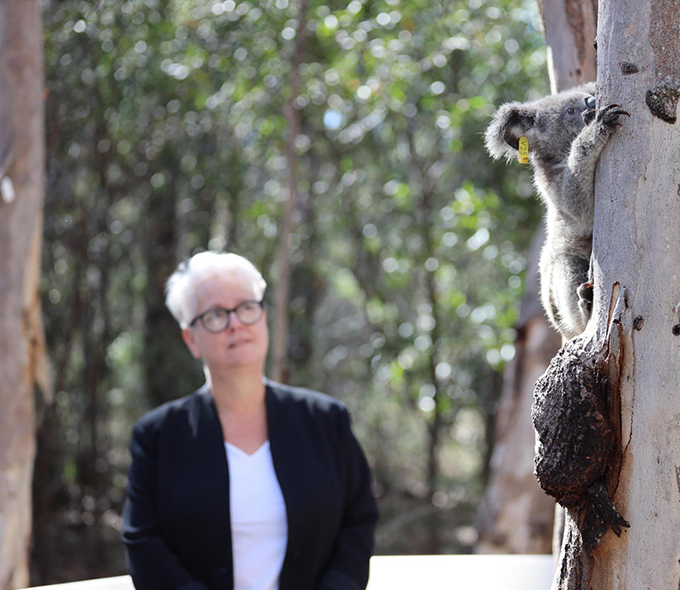After a months-long marketing blitz, the much-hyped Barbie movie is opening this week. RMIT experts are available to speak to Barbie’s marketing strategy and inclusivity revolution, the power of nostalgia to sell brands, and Barbie’s cost to waste and landfill.
Associate Professor Lauren Gurrieri, Senior Lecturer in Marketing in the School of Economics, Finance and Marketing
Comments taken from The Conversation article, Is the Barbie movie a bold step to reinvent and fix past wrongs or a clever ploy to tap a new market?
“Although some have criticised Barbie’s saturation strategy, it is a very deliberate marketing ploy to revitalise and redefine a brand with a contested position and history.
“Only a few years back, Barbie was a brand in crisis. Sales plummeted across 2011 to 2015 against the cultural backdrop of a rise in body positivity and backlash against a doll that represented narrow ideals and an impossible beauty standard.
“And despite the multiple careers Barbie has held over the decades, research highlights that girls who play with Barbie believe they have fewer career options than boys.
“In response to this backlash, Mattel launched a new range of Barbies in 2016 that were promoted as diverse, representing different body shapes, sizes, hair types and skin tones.
Barbie has since been marketed as a symbol of diversity and inclusion. To signify the extent of the transformation, Mattel’s executives gave this project the code name ‘Project Dawn’.
“Mattel – like many other brands joining the ‘inclusivity revolution’ – knew that diversity sells, and they needed to make their brand relevant for contemporary consumers.
“Barbie the film is simply the next step in an evolution to make brand Barbie inclusive. With Greta Gerwig, acclaimed director of female-led stories at the helm, and a diverse cast of Barbies of different races, body types, gender identities and sexual preferences, the film and its creators have sought to assure audiences of the film’s feminist leanings.
“Yet, Robbie Brenner, executive producer of Mattel Films, has explicitly stated that Gerwig’s Barbie is ‘not a feminist movie’. Indeed, the main character still represents a narrow beauty standard – tall, thin, blonde, white – with diverse characters in place to support her narrative.
“Which begs the question: are these inclusion initiatives simply emblematic of diversity washing, where the language and symbolism of social justice are hijacked for corporate profit? Or do they represent a genuine effort to redress the chequered history of a brand that promotes poor body image, unrealistic ideals and rampant materialism?”
Associate Professor Lauren Gurrieri is a Senior Lecturer in the School of Economics, Finance and Marketing at RMIT University. Her research examines gender, consumption and the marketplace, with a focus on gender-based inequalities in consumer and digital cultures.
Narelle Lancaster, Advertising lecturer in the School of Media and Communication
“Generations upon generations now have grown up with Barbie and her accessories, but Barbie has had its peaks and troughs; it hasn’t all been lazing on the Barbie deck chair with Ken bliss.
“Facing stiff competition (Bratz, for example), judgement and backlash, the Barbie brand doesn’t apologise – she just gets on with being her, adapting quietly yet impressively.
“It’s the repositioning of Barbie as a serious career girl that brought a resurgence in fans. Barbie isn’t just a plastic-shoed siren, she’s a doctor, a pilot – she’s anything you want her to be.
“Nostalgia is a real seller for brands. Fashion brands like Country Road and Sportsgirl have had repeated success bringing back ‘vintage’ styles from 20 years ago – except it isn’t the current target audience just purchasing, it’s the retro middle-aged mums who wore it decades ago who enjoy it again.
“It’s unsurprising that retail support is enormous for Barbie, with the full range of low to high-end brands getting on board. This isn’t little girl Barbie fanaticism, it’s adult Barbie – it’s pink! It’s fun! Treating yourself to a branded pink t-shirt or candle, shows you are still team Barbie – even if you long outgrew playing with dolls.
“While recent listings reveal nostalgia pays dividends at the box office, Transformers and Indiana Jones are heavy hitters – these have not been targeted at women. Barbie is the perfect antidote.
“The Barbie movie is fun and brand reinforcing, and wearing the merchandise and joining in on the Barbie resurgence is fashionable, but this is not about taking Barbie to the stratosphere – she never left.”
Narelle Lancaster is a Barbie fan and Advertising lecturer in the School of Media and Communication at RMIT University.
Alan Pears AM, Senior Industry Fellow in the School of Global, Urban and Social Studies
Comments taken from Pears’ The Conversation article, In a Barbie world … after the movie frenzy fades, how do we avoid tonnes of Barbie dolls going to landfill?
“It made headlines around the world when the much-hyped Barbie movie contributed to a world shortage of fluorescent pink paint.
“When the Barbie movie comes out this week, it’s bound to trigger a wave of doll purchases over and above the 60 million Barbies already sold annually.
“Toys are the most plastic-intensive consumer goods in the world, according to a 2014 United Nations Environment Program report.
“Worse, very few toys are recycled. That’s often because they can’t be – they’re made of a complex mixture of plastics, metals and electronics. When children get bored, these toys often end up in landfill.
“By my calculations, emissions on average across all these types of toys are about 4.5 kilograms per kilogram of toys.
“The question is, how can we cut our emissions to zero as fast as possible to ensure we and our children have a liveable climate – without putting a blanket ban on plastic toys? After all, toys and entertainment add happiness to our lives.
“To date, there has been little focus on making the toy industry more sustainable. But it shouldn’t escape our notice.
“Toy manufacturers can – and should – use low carbon materials and supply chains, and focus on making toys easily dissembled. Toys should be as light as possible, to minimise transport emissions. And battery-powered toys should be avoided wherever possible, as they can double a toy’s climate impact and turn a plastic waste problem into an electronic waste problem. To their credit, some toymakers have cut back on plastic in their packaging, given packaging immediately becomes waste.
“In a welcome move, the maker of Barbie, Mattel, launched their own recycling scheme in 2021, allowing buyers to send back old toys to be turned into new ones. This scheme isn’t available in Australia, however.
“Toymakers can help at the design stage by choosing the materials they use carefully. Some plastic-dependent brands such as Lego are unilaterally moving away from petrochemical-based plastic in favour of sugarcane-based plastic. But it’s not a short-term project.
“Meanwhile, governments can encourage this by penalising cheap, high-environmental-impact plastics. We can look to the European and American bans on BPA-containing plastics in infant milk bottles as an example of what’s possible. Governments can set up effective recovery and recycling systems able to handle toys.”
Alan Pears is a Senior Industry Fellow at RMIT University. He researches, teaches and writes on environment, climate and energy issues across all sectors of the economy.
***








